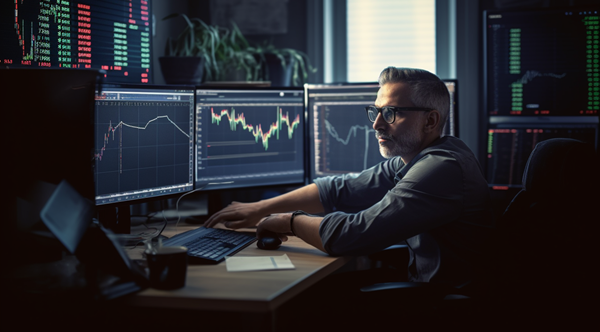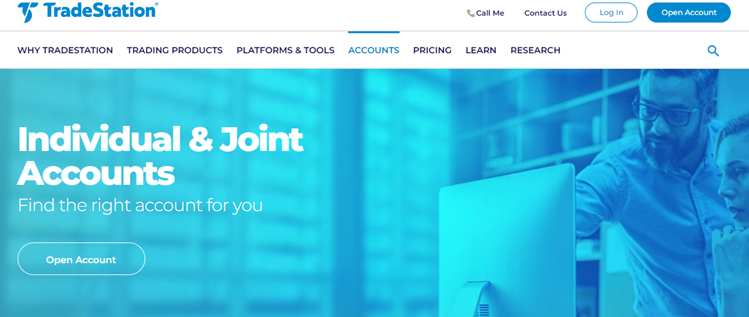- August 3, 2023
- Posted by: CoachShane
- Categories: Day Trading, Futures Trading, Trading Article

The amount of money needed to start trading futures varies, but generally, it’s recommended to have a minimum capital of $5,000 to $10,000. However, the actual requirement can be higher depending on the broker and the contract being traded.
 Are you interested in learning how to trade futures? You will learn about the financial requirements of trading futures, including the amount of money you need to start trading. We’ll also explain the basics of futures trading and provide an overview of some popular futures brokers.
Are you interested in learning how to trade futures? You will learn about the financial requirements of trading futures, including the amount of money you need to start trading. We’ll also explain the basics of futures trading and provide an overview of some popular futures brokers.
Financial Requirements for Trading Futures
If you’re considering day trading futures, there are some key concepts you need to be aware of.
- You need to have enough capital to cover your trading losses and to meet margin requirements when trading
- Brokers have different requirements for margin as do futures contracts
- You need to understand the concept of stop losses and margin calls
A stop loss is a predetermined point at which you will close your trade in order to prevent further losses. A margin call is when your broker requires you to add more capital to your account in order to maintain your current trading position.
Initial Investment Needed
Getting into futures trading requires an initial investment but the amount needed has come down in recent years. The amount of money you need to start trading futures will depend on the leverage ratios you use and the amount of risk that fits your personality.
Broker Amounts
Brokers will have different amounts that you must deposit in order to trade. This varies widely so ensure you do your homework before committing to any one broker
Margin Amounts
Different contracts have different amounts that are needed in your account. These are set by the exchange.
Leverage ratios can vary from 1:2 to 1:100, meaning you may be able to start trading with as little as two or three times the value of the contract you are trading. Risk management should also be taken into consideration when determining the amount of money you need to start trading futures.
You should only invest an amount of money that you’re comfortable losing and should consider setting a stop-loss order to limit any losses.
Explanation Of Margins In Futures Trading
Futures margins are the amount of money that you must have in your account before entering a trade. When you open a futures position, you are essentially making a deposit to your broker and this deposit is known as the margin.
- Gold futures is $8,300 per contract
- S&P 500 futures (ES) initial margin requirement is $12,500 per contract
- Crude Oil futures (NYMEX CL) is $3,190 per contract
Brokers use the margin as a way of reducing their risk while allowing you to benefit from the leverage potential of futures trading. By diversifying your portfolios with futures, you are able to open positions with a fraction of the capital you would need to open the same size position in the underlying asset.
This is what makes futures so attractive to traders – the ability to take larger positions with less capital.
Micro Futures: Lower Cost Alternative
Micro futures are contracts with a much lower cost of entry than traditional futures contracts. This makes them an attractive option for those looking to speculate and take advantage of market volatility without having the capital for the standard contract.
Micro futures also offer leverage strategies that can magnify the returns on a smaller capital base.
Explanation of micro futures
Micro futures are a type of day trading instrument that allows traders to take advantage of smaller leverage ratios and lower risk management. They’re considered derivatives because they derive their value from the underlying asset. However, they’re much more cost-effective than regular futures since the contracts are much smaller in size.
This allows traders to purchase a contract with a smaller capital outlay while still having access to the same markets.
For example: the initial margin requirement for MICRO E-Mini S&P 500 futures (MES) is $308 per contract
Comparison of financial requirements between standard and micro futures
Comparing standard and micro futures, you’ll find that the latter requires less capital to begin trading, making trading futures accessible to virtually anybody. Micro futures offer traders the ability to manage costs and financial leverage without the need for a large initial capital investment. This makes it a great way to start trading futures without having to commit a large amount of money upfront.
Brief Overview Of Futures Trading
Futures trading is a market in trading that involves speculating on the future price of a commodity, currency, or index. It can be used to hedge against risks or to take advantage of market volatility. Futures trading is done through leverage and is subject to leverage limits set by the futures exchange.
To participate in futures trading, you’ll need to enter into a contract with an exchange to buy or sell a specific asset at a predetermined price on a predetermined future date. To make a profit or limit losses, you must analyze commodity pricing, research the market, and assess the potential risk of the futures contract.
Trading strategies vary, but all involve market analysis and predicting future price changes. To start trading futures, you need to open an account with a broker that offers futures trading, and you’ll usually need to deposit a minimum amount of money.
Brokers And Their Requirements
If you’re looking to get into futures trading, you’ll need to understand the role of brokers and the requirements they have.
Brokers in the futures market are responsible for providing their clients with access to swap contracts and other trading instruments, as well as offering leverage. They also provide guidance in understanding the markets and are responsible for executing trades on behalf of their clients.
 To open an account and start trading, brokers usually require their clients to deposit a certain amount of money, referred to as a margin deposit. This deposit serves as collateral for the broker in order to protect them against potential losses.
To open an account and start trading, brokers usually require their clients to deposit a certain amount of money, referred to as a margin deposit. This deposit serves as collateral for the broker in order to protect them against potential losses.
Depending on the broker, the amount of money required to open an account and start trading can vary, but is typically between $2,000 and $5,000. Additionally, some brokers may require additional funds to be deposited periodically, depending on the trading strategies employed.
Potential Profits And Losses
Understand the potential profits and losses you could incur when futures trading, and be sure to factor in any associated costs. Here is a list of costs that a trade will incur as they tackle the markets
| Cost | Description |
|---|---|
| Commission | Fee charged by the broker for executing futures trades. |
| Exchange Fees | Fees imposed by the exchange for trading futures contracts, including transaction fees, clearing fees, and market data fees. |
| Margin Requirements | The minimum amount of funds required to maintain positions in futures contracts. |
| Market Data | Fees for accessing real-time market data, news, and research tools. |
| Software or Platform Fees | Costs associated with using a trading platform or specialized software for futures trading. |
| Financing Costs | Charges incurred for holding overnight futures positions |
| Slippage | Additional costs resulting from the difference between the expected execution price and the actual price of a trade. |
| Taxes | Taxes on futures trading profits, subject to local regulations. |
Short selling and leverage trading are popular strategies used in futures trading, both of which can generate great profits if the market moves in the trader’s favour. However, traders should also be aware of the risks that come with such strategies, including the potential for significant losses if the market moves against them.
To minimize risk, traders should always use stop losses when trading futures. This helps to protect their capital in the event that the market moves against them.
Conclusion
Trading futures can be an accessible option for individuals with varying budgets, thanks to the introduction of micro futures. However, it’s important to consider the financial requirements, choose a reliable broker, and develop a solid trading plan to navigate the futures market successfully. With careful preparation and diligent risk management, futures trading can potentially open doors to financial opportunities and wealth.
